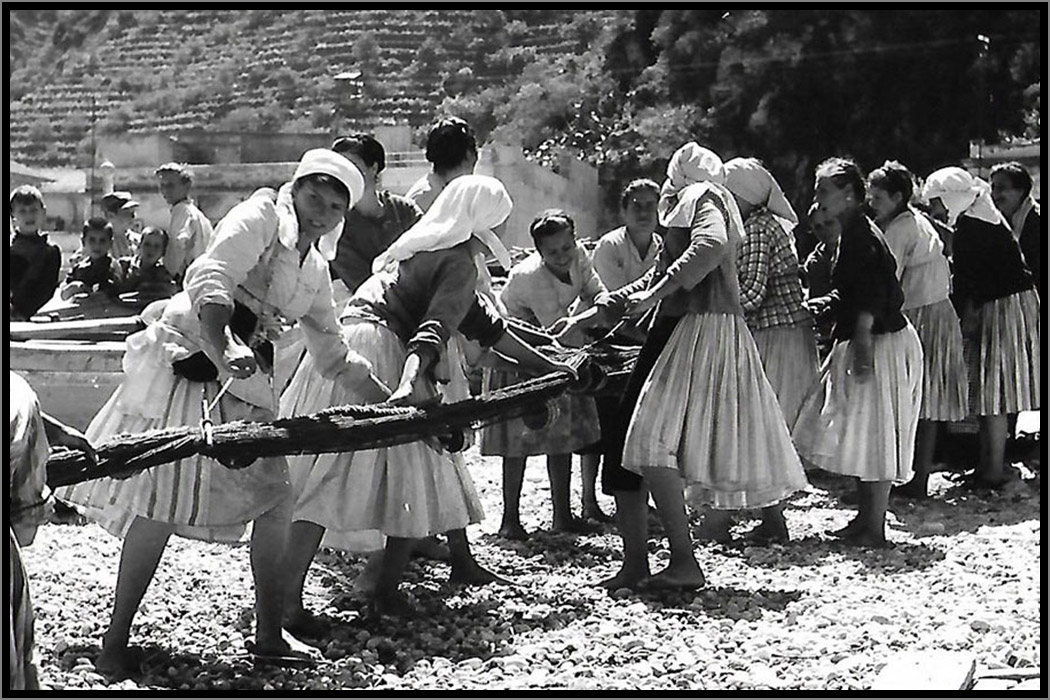Women of the Sea
Bagnara Calabra, the city where the Sfalassà viaduct is located, is famous for the iconic figure called "Bagnarota", a female character born after the earthquake of 1783 that destroyed the city and made women of that time, orphans, or widows.
These lonely women committed to rebuilding the small centre according to matriarchal principles and on their ability in sea trade and barter, brought Bagnara Calabra once again to its original splendour, and commenced a myth that would be handed down by various authors who made these women the protagonists of their writing and literature.
These "Bagnarote", are specifically mentioned in the epic book by Stefano D’Arrigo “Horcynus Orca”. Here, with the name “femminote”, their role is to help cross the Straight thanks to their trade skills. They also appear in the book “Un Treno nel Sud” by Corrado Alvaro, where they are painted as strong women with nomadic behaviours that educate their daughters according to the principles of hard work and sacrifice.
Mia Martini, a famous Italian singer of the past, also called herself a "Bagnarota", as she originated from Bagnara Calabra, from that community of fishermen and women of that same place.





